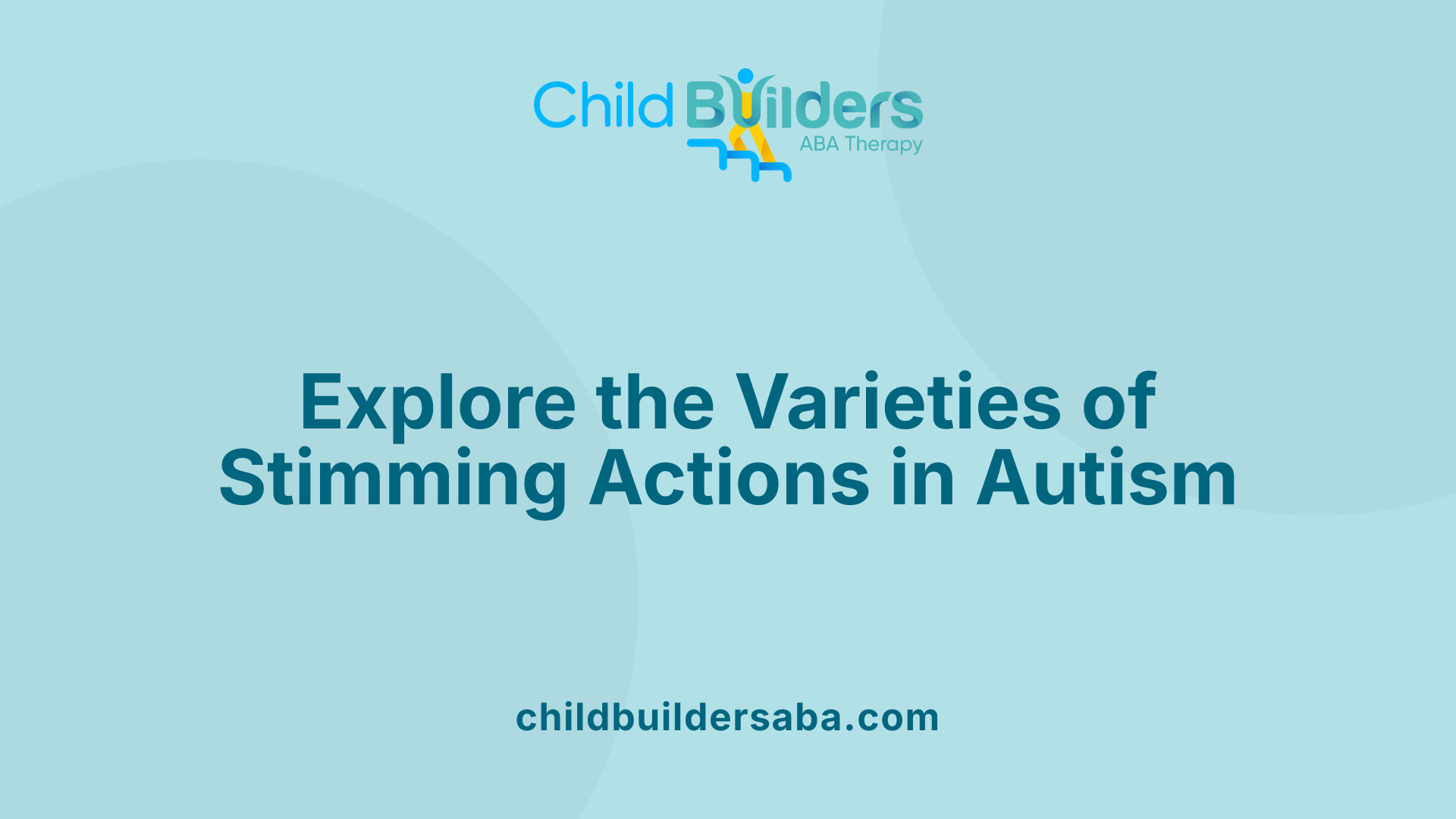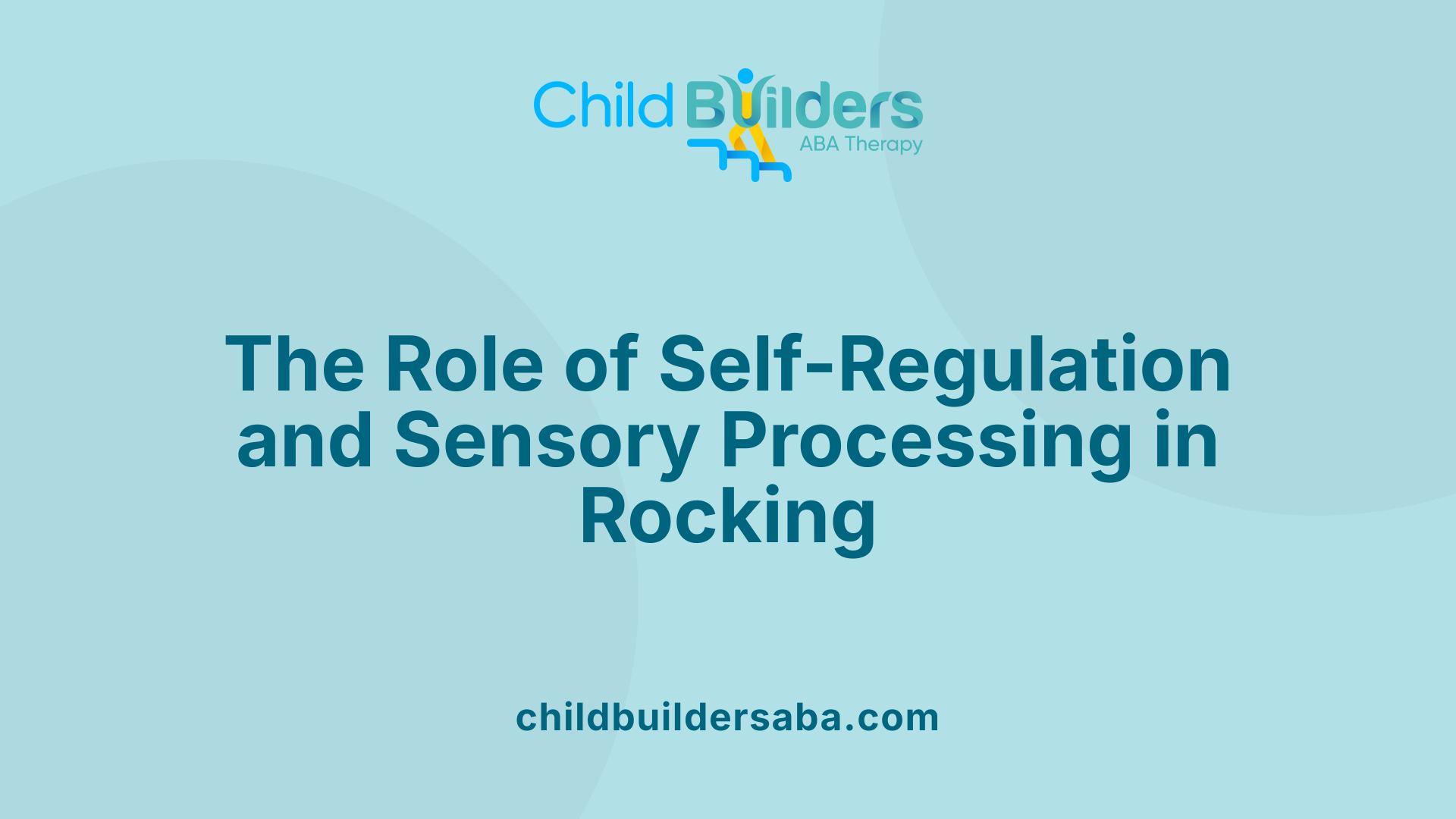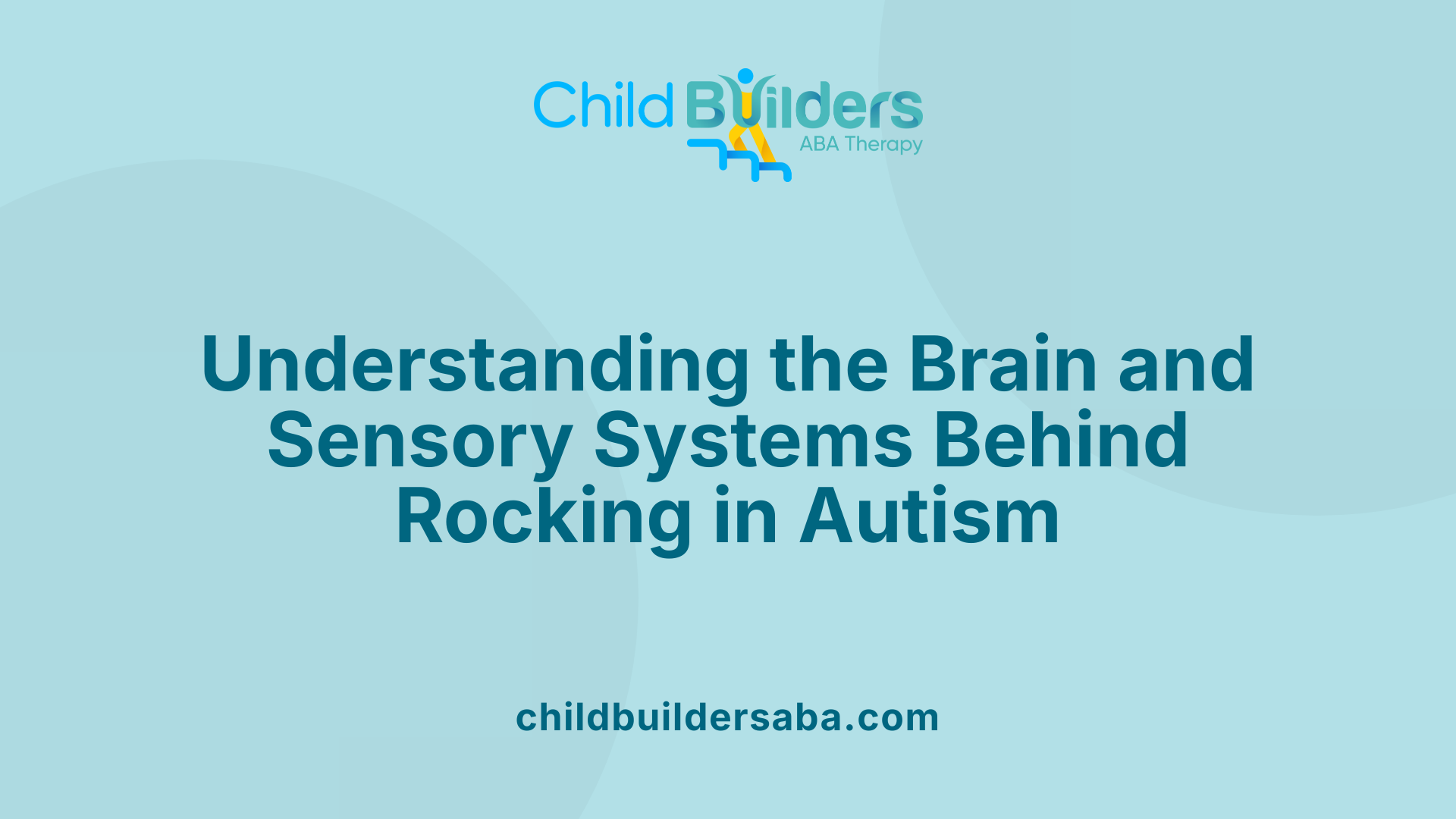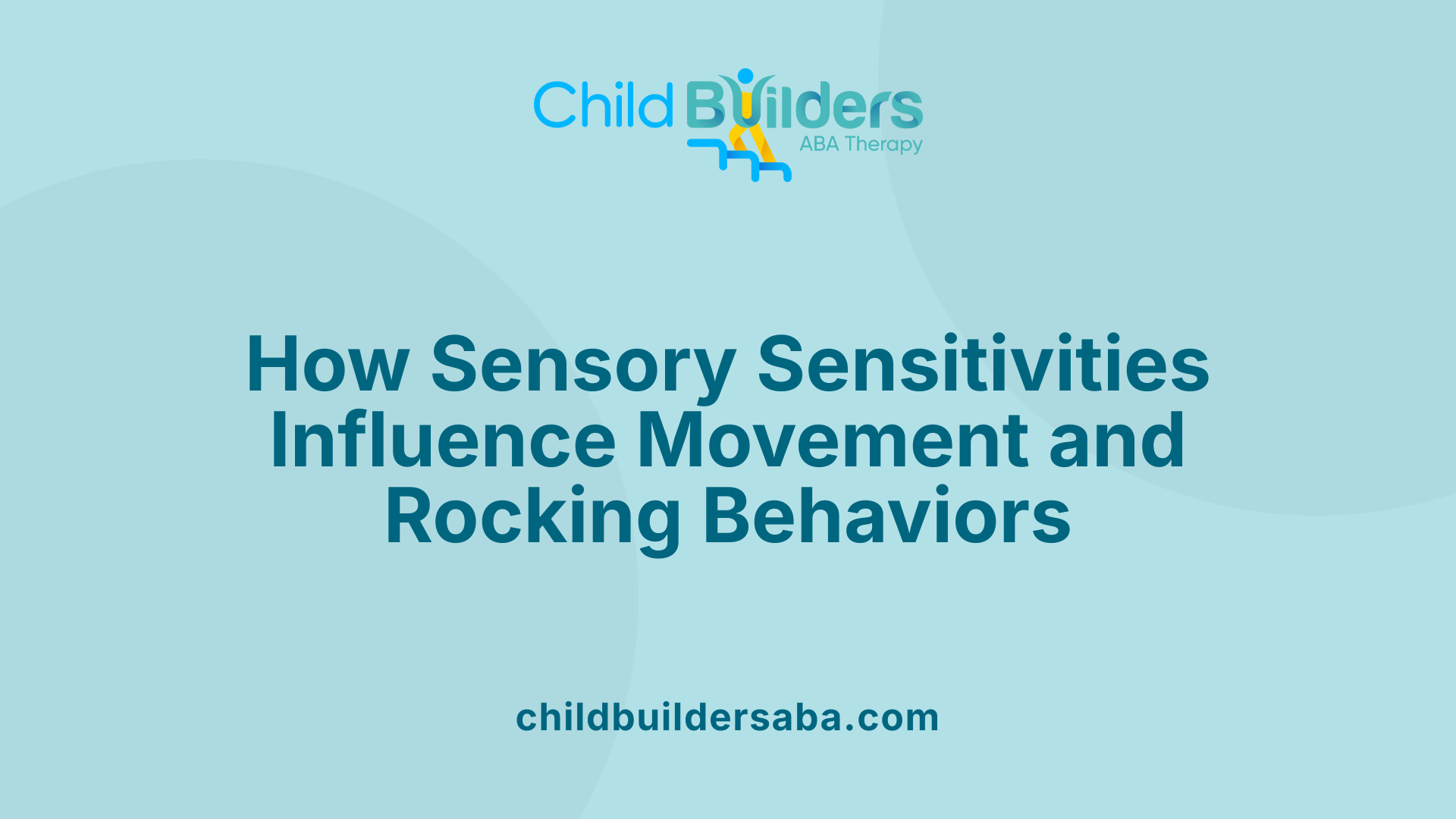Why Do Autistic People Rock?

Understanding the Significance of Rocking in Autism Spectrum Disorder
Rocking is a common behavior observed in many individuals with autism. Often misunderstood, this repetitive movement serves multiple functions rooted in sensory regulation, emotional expression, and neurological processing. This article explores why autistic people rock, examining the types of behaviors involved, the underlying reasons, and the best ways to support those who engage in this form of self-stimulation.
Types of Stimming Behaviors in Autism

What are the common types of stimming behaviors in autism?
Stimming behaviors are the repetitive actions that many autistic individuals use to self-regulate, express emotions, or manage sensory experiences. Several types of stimming are commonly observed.
Movements such as hand-flapping, rocking, pacing, spinning, and bouncing are typical. These movements can help individuals feel more grounded and provide sensory input. For example, rocking can offer a rhythmic, soothing sensation that helps reduce stress.
In addition to physical movements, vocalizations are also common. These include humming, singing, or making repeated sounds or phrases. Such sounds serve to distract, comfort, or entertain.
Other behaviors involve tactile interactions, such as tapping or clicking objects, touching textures, or listening repeatedly to certain sounds or music. These activities stimulate tactile and auditory senses, providing comfort or focus.
Visual stimming involves gazing at lights, patterns, or moving objects. This can include watching spinning toys, flashing lights, or visual patterns which create engaging visual stimuli.
Oral and olfactory stim behaviors include biting, chewing objects, sniffing, and seeking specific tastes or smells. These behaviors often help satisfy sensory needs or reduce discomfort.
Tactile behaviors involve rubbing hands, playing with objects, scratching, or touching different textures. These actions help regulate tactile senses and provide sensory feedback.
Finally, vestibular or proprioceptive activities, such as swinging, jumping, or bouncing, involve movement that stimulates the balance and spatial awareness systems. These often help with body awareness and coordination.
All these behaviors serve as coping mechanisms, assisting individuals in handling sensory overload, emotional challenges, or boredom. Since the specific behaviors can vary widely, understanding each person’s unique needs is essential for support and acceptance.
The Significance of Self-Stimulation in Autism
 Self-stimulation, or stimming, is a natural and common behavior observed in individuals with autism. It includes movements such as rocking, hand flapping, spinning, or repetitive sounds and gestures. For many, these behaviors serve important roles in daily life, helping to manage sensory overload, reduce anxiety, and express emotions.
Self-stimulation, or stimming, is a natural and common behavior observed in individuals with autism. It includes movements such as rocking, hand flapping, spinning, or repetitive sounds and gestures. For many, these behaviors serve important roles in daily life, helping to manage sensory overload, reduce anxiety, and express emotions.
Stimming acts as a form of self-regulation, allowing individuals to control overwhelming sensory input or emotional states. For example, rocking might help block out overstimulating sights and sounds, providing a calming rhythmic sensation. It can also trigger the release of feel-good chemicals in the brain, fostering a sense of comfort and well-being.
Different behaviors serve various functions. Some may seek to stimulate senses like touch or sight, while others help soothe or distract from stressful situations. This may include repetitive actions such as tapping, humming, or eye fixation, which provide sensory engagement or emotional relief.
Not all stimming is problematic. Many forms are harmless and can even be beneficial, offering comfort and stability. However, some behaviors, like head banging or swallowing dangerous objects, can pose safety concerns.
Understanding the purpose behind stimming is crucial. Rather than punishing or suppressing these natural activities, caregivers and educators are encouraged to find ways to support self-regulation. This might involve creating sensory-friendly environments, offering alternative stim options, or teaching socially acceptable stimming outlets.
In conclusion, stimming is a vital aspect of how many autistic individuals cope with their environment. Recognizing its functions and respecting these behaviors promotes acceptance and well-being, emphasizing the importance of understanding over punishment.
Why Do Autistic Individuals Engage in Rocking Behaviors?

Why do some autistic individuals engage in rocking behaviors?
Many autistic individuals engage in rocking as a form of self-stimulation, or 'stimming,' that helps them regulate sensory input and control their emotional state. This repetitive motion provides a predictable, soothing sensation that can help reduce feelings of stress or overwhelm.
Because many autistic individuals experience visuomotor processing differences and difficulties with perceptual and motor coordination, rocking can serve as an effective tool for sensory regulation. By engaging in rhythmic movements, they can create calming sensory input that makes the environment feel more manageable.
Rocking also fulfills a role in emotional expression. It can act as a nonverbal way of conveying feelings such as anxiety, excitement, or frustration, especially when verbal communication is challenging.
Moreover, for some, rocking acts as a barrier against overwhelming stimuli. It helps block out distracting sounds, lights, or other sensory inputs, thereby reducing anxiety.
Children with autism often do not synchronize their rocking with others, like caregivers or peers. This lack of social mirroring reflects broader social interaction differences but emphasizes that rocking is primarily about self-regulation.
Overall, rocking behaviors serve multiple functions: they help autistic individuals self-soothe, align their sensory experiences, and communicate feelings, making them an integral part of managing daily life.
Neurological and Sensory Explanations for Rocking
 Rocking behaviors in autism are deeply rooted in neurological and sensory factors that influence how individuals perceive and interact with their environment. One important aspect is the altered neural connectivity seen in many autistic individuals, which affects the way different parts of the brain communicate. This can lead to unique responses to sensory stimuli, especially within the vestibular system that controls balance and spatial awareness.
Rocking behaviors in autism are deeply rooted in neurological and sensory factors that influence how individuals perceive and interact with their environment. One important aspect is the altered neural connectivity seen in many autistic individuals, which affects the way different parts of the brain communicate. This can lead to unique responses to sensory stimuli, especially within the vestibular system that controls balance and spatial awareness.
The vestibular system is crucial for sensing movement and maintaining equilibrium. When its processing is disrupted, individuals may find certain movements or positions particularly soothing or necessary for sensory regulation. Rocking, for instance, can provide predictable, rhythmic stimulation that helps manage sensory overload or under-stimulation.
Furthermore, impairments in sensory integration processes—how the brain processes and combines sensory information from various sources—can make typical responses to the world overwhelming or confusing. To cope, some autistic individuals engage in repetitive movements like rocking, which offers immediate sensory feedback and comfort.
Other contributing factors include deficits in perceptual and motor coordination. These impairments might hinder the ability to engage in more socially normative behaviors, such as mirroring or synchronized movement with others. As a result, rocking becomes a form of self-stimulation, helping individuals internally regulate emotions, reduce anxiety, and attain sensory balance.
In essence, rocking in autism can be viewed as a complex response to internal neurological states and sensory environments. It acts as a self-managed tool for calming, organizing sensory input, and expressing emotions, making it an important aspect of understanding the sensory and neural challenges faced by many autistic individuals.
Rocking as Self-Soothing and Repetitive Behavior
How do rocking behaviors serve as self-soothing or repetitive actions in autistic individuals?
Rocking behaviors are a common form of self-stimulation used by many autistic individuals to manage their sensory and emotional states. These repetitive movements, such as back-and-forth or side-to-side rocking, provide rhythmic and predictable sensory input. This consistency can be very calming, helping reduce feelings of anxiety, stress, or emotional distress.
When overwhelmed by sensory overload or emotional fluctuations, rocking acts as a grounding activity. It creates a stable, repetitive sensation that helps individuals feel more in control of their environment. Many find that this behavior soothes nerves and alleviates feelings of chaos or discomfort.
Beyond its calming effects, rocking can serve as a nonverbal way for autistic individuals to communicate needs or emotional states, especially when words are difficult to express. For example, increased or intense rocking might indicate distress or excitement.
Environmental triggers such as loud noises, bright lights, or sudden changes often increase the likelihood of rocking. Sensory sensitivities, like hypersensitivity to stimuli, also play a significant role. Emotional challenges such as frustration or anxiety can similarly prompt this behavior.
Understanding that rocking is a natural self-regulation strategy is essential. Supporting this behavior through sensory-friendly environments, and providing alternative calming techniques, can enhance comfort and emotional well-being.
In therapeutic settings or daily life, recognizing these behaviors as coping mechanisms rather than problems allows caregivers and professionals to foster acceptance, contributing to better emotional regulation and overall well-being for autistic individuals.
Supporting Strategies for Individuals Who Rock
Many autistic individuals engage in rocking as a form of self-regulation and sensory management. To support these behaviors effectively, it’s important to first identify and address any triggers such as sensory overload, loud environments, or emotional distress that may cause increased rocking.
Creating sensory-friendly spaces can make a significant difference. This includes providing calming environments equipped with sensory tools like weighted blankets, soft lighting, and noise-canceling headphones. These tools help reduce overstimulation, making it easier for individuals to manage their sensory experiences.
Teaching alternative calming behaviors can also be beneficial. For example, deep breathing exercises, sensory breaks, or engaging in physical activities like swinging or stretching can serve as substitutes for rocking while fulfilling the same need for sensory input.
Collaborating with healthcare professionals, such as occupational therapists and psychologists, enables the development of customized strategies that address the root causes of rocking behaviors. These experts can identify the purpose of the behavior and recommend tailored interventions.
Acceptance plays a crucial role. Recognizing that stimming, including rocking, is a natural and beneficial activity helps foster a supportive environment. This understanding encourages individuals to express themselves freely without fear of judgment.
While supporting self-regulation, it’s also vital to promote safety. Addressing harmful behaviors, such as head banging or punching, involves implementing safety measures and behavioral interventions that focus on replacing dangerous actions with safer alternatives.
Overall, supporting individuals who rock involves a combination of environmental adjustments, behavioral strategies, professional collaboration, and a respectful attitude towards their self-stimulatory behaviors. This approach helps improve their well-being, enhances participation in daily activities, and promotes acceptance of their unique ways of sensory regulation.
Behavioral Perspectives on Similar Self-Stimulatory Actions
Are behaviors like toe walking or hand-flapping specific to autism, or do they occur in other conditions?
Behaviors such as toe walking and hand-flapping are often linked to autism but are not exclusive indicators of the condition. These actions are forms of self-stimulatory or self-regulatory behaviors known as stimming. They can also be observed in typically developing individuals, especially when they are concentrating, feeling bored, or experiencing strong emotions.
In autistic people, these behaviors tend to be more persistent, repetitive, and less controllable. They often serve specific functions, helping individuals manage sensory overload, reduce anxiety, or express frustration. For example, a child might flap their hands when overwhelmed or rock back and forth to soothe themselves.
However, the presence of behaviors like toe-walking or hand-flapping alone is not sufficient for a diagnosis of autism. Their meaning and significance depend on the context, frequency, and whether they interfere with daily functioning.
Understanding that these behaviors can be part of normal development or reactions to different situations is crucial. The same actions may appear across various conditions or even in neurotypical individuals, especially under certain circumstances.
In summary, while common in autism, behaviors like toe walking and hand-flapping are broader in occurrence, highlighting the importance of considering the overall context and purpose behind these actions rather than viewing them as exclusive signs of autism.
Explore more about self-stimulatory behaviors in neurodiverse and neurotypical populations.
Search query: Non-autistic self-stimulatory behaviors
Impact of Sensory Issues on Movement and Rocking

How can sensory issues influence behaviors like rocking or increased movement in individuals with autism?
Sensory sensitivities play a significant role in determining movement patterns like rocking or repetitive motions in autistic individuals. These behaviors are often a direct response to how someone perceives sensory input from their environment.
When a person is hypersensitive to sights, sounds, textures, or other stimuli, they may experience heightened arousal or stress, which can be overwhelming. In such cases, rocking, hand-flapping, or spinning serve as effective ways to regulate these intense sensory experiences. For example, rhythmic rocking can create a calming, predictable sensation, helping to soothe the nervous system and reduce feelings of chaos.
On the other hand, hyposensitivity — a condition where sensory input is underwhelming or not perceived strongly enough — can lead to a desire for more intense experiences. Such individuals may seek high-stimulation activities like jumping, spinning, or touching various textures to ensure their brains receive enough sensory input for comfort and focus.
These movement behaviors are not just habits but functional self-regulation tools. They help manage feelings of sensory overload or under-stimulation, creating a sense of control and safety.
Understanding whether a person’s behaviors stem from hypersensitivities or hyposensitivities is essential for providing appropriate support. Tailoring environments and activities to suit their sensory profile can significantly improve their wellbeing and reduce disruptive behaviors.
In conclusion, sensory issues shape a wide range of movement behaviors, with rocking and other repetitive motions serving as natural responses to sensory processing differences, helping individuals navigate their complex sensory worlds.
Embracing and Supporting Natural Behaviors
Rocking in autism exemplifies how behaviors rooted in sensory and neurological functions serve vital roles in self-regulation and emotional expression. Recognizing that such behaviors are natural, functional, and often beneficial is crucial for fostering understanding and acceptance. Supporting autistic individuals involves creating sensory-friendly environments, understanding the underlying reasons, and providing tools and strategies that promote comfort, safety, and social integration. Embracing these behaviors not only affirms their importance but also encourages a more compassionate approach to autism, where every movement has meaning and significance.
References
- Autism and Stimming - Child Mind Institute
- Stimming: Causes and Management - Healthline
- Why Do Autistic People Rock? | Autism Some Assembly Required
- Why Do Autistic Kids Spin or Rock Their Bodies
- Why Do Autistic People Rock Back and Forth? - Astra ABA
- Repeated movements and behaviour (stimming)
- How To Identify Self-Soothing Behaviors in Children with Autism
- Why Do Autistic People Rock Back and Forth? - Astra ABA
- Reducing Self-stimulatory Behaviors in Individuals with Autism



.jpg)

































































































